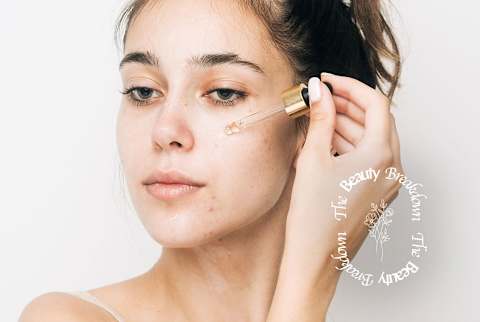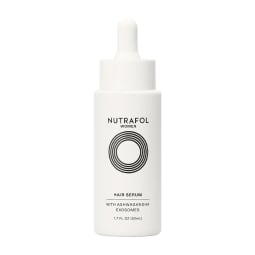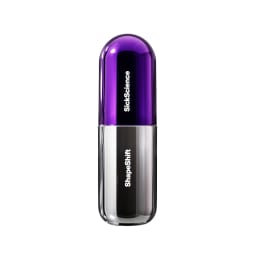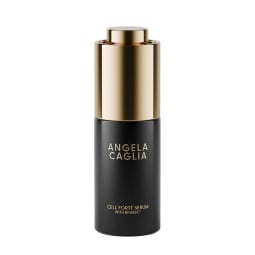The Buzzy Ingredient Promises A Revitalized, Fresh Complexion
From the pros.


Beauty & Health Editor
Beauty & Health Editor
Hannah Frye is the Beauty & Health Editor at mindbodygreen. She has a B.S. in journalism and a minor in women’s, gender, and queer studies from California Polytechnic State University, San Luis Obispo. Hannah has written across lifestyle sections including beauty, women’s health, mental health, sustainability, social media trends, and more. She previously worked for Almost 30, a top-rated health and wellness podcast. In her current role, Hannah reports on the latest beauty trends and innovations, women’s health research, brain health news, and plenty more.
Image by Aleksandra Jankovic x mbg creative August 18, 2025 We carefully vet all products and services featured on mindbodygreen using our Our selections are never influenced by the commissions earned from our links. Welcome to the Beauty Breakdown, our series that dives into today's buzziest beauty topics. In each, we focus on a different theme and highlight all the need-to-know basics, common mistakes, and the best products to get your hands on. In the realm of skin care, certain principles are straightforward. When your skin feels dry, you reach for moisturizer. Ahead of a day under the sun, sunscreen is a must. And the inclusion of retinol in a healthy aging routine has become almost second nature to many. However, some concepts remain elusive, and exosomes are a prime example. As a beauty editor accustomed to testing cutting-edge products, delving into the world of exosomes demanded more thorough investigation than usual. It's a relatively new topic in the beauty space, so there was a lot to get caught up on. But let me assure you: The deep dive was more than worth it. Clearly, exosomes are a new frontier in skin care technology, and many questions remain unanswered. Nonetheless, they show promise in promoting skin healing and rejuvenation. Allow me to elaborate. Image by mbg Creative / mbg creative

The 101 on exosomes
Think of exosomes as messengers, tiny carriers delivering vital nutrients to your skin and serving as the primary communicators between your cells.
Once applied—whether in a professional setting or at home with trusted over-the-counter products—exosomes are absorbed by target cells at damaged tissue sites, delivering their molecules to stimulate anti-inflammatory and regenerative effects. Once there, they encourage the skin to regenerate components of the skin that may be lost or damaged, such as collagen, elastin, ceramides, and so on.
These are "messengers that can really impact the body, sending cellular signals to increase collagen and other rejuvenative changes," notes board-certified holistic plastic surgeon Anthony Youn, M.D.
To enhance absorption, some experts advocate applying exosomes after procedures like microneedling or laser treatments. Others apply them post-procedure not solely for absorption but also because exosomes aid in skin healing following treatments.
What's more, exosomes are unlike many other treatments for aging skin (think retinol, glycolic acid, and so on) in that exosomes soothe the skin, not irritate it. So, for folks with highly sensitive complexions who have been met with rashes or redness when testing classic aging serums, this is a particularly fitting option.
But where do exosomes come from?
Exosomes can be either synthetically produced or derived from stem cells. Stem cells can be sourced from a variety of places, including plants, animals, and yes, humans.
Now, the notion of human-derived exosomes might raise eyebrows, and I was certainly puzzled by it initially. Certain skin care products, like the ExoCel Bio serum used in dermatology offices, utilize exosomes derived from mesenchymal stem cells, isolated and expanded from a specific layer (the chorion) of healthy, donated human placenta. Naturally, these placentas undergo rigorous screening for communicable diseases and pathogens.
Celebrity esthetician and founder of her namesake beauty brand Angela Caglia sheds light on the rationale behind using human-derived exosomes: Since human skin originates from mesenchymal stem cells, she says, it's logical that it responds favorably to exosomes derived from the same source. Caglia even incorporates human-derived exosomes from adipose tissue into her topical, over-the-counter product called the Cell Forte Serum.
What benefits can you expect from these regenerative properties?
As noted, exosomes are used for the regenerative properties. Here's what that means when you actually get down to it:

Image by mbg Creative / mbg creative
Arguments against topical exosomes
Some experts say topical exosomes are useless, claiming they cannot absorb into skin that hasn't been primed via microneedling or lasers, but other experts view them as revolutionary. In short, it's a divisive topic, but everyone agrees that in-office or at-home, quality and source are the most important factors.

Image by mbg Creative / mbg creative
3 things we're getting wrong
To make things even more clear, here are a few misconceptions to be wary of:

Image by mbg Creative / mbg creative
The 3 steps you need to know
Now that we've covered the myths, let's get into the best steps for incorporating exosomes in your beauty routine should you feel inspired:
1.
Do your research before investing
When searching for a great exosome treatment or product, you should prioritize proven results. Look for clinical study results (photos are a plus) as well as clear messaging as to where the brand or office sources their exosomes.
2.
Know what you're looking for
If you go into exosome research without a skin or hair growth goal in mind, it's difficult to know what kind of product or treatment will help. Want to address fine lines and wrinkles? Ease discoloration? Speed up healing? Some products are designed to target some concerns and not others, so it's helpful to know what you want from the start.
3.
Don't be afraid to ask for help
Exosomes, like any ingredient in skin care, won't be a magic bullet for anyone. In fact, there are plenty of other ingredients that may be a better fit for your skin concern at hand. Before investing, it's worth asking your dermatologist or esthetician if it's worthwhile, especially if you plan on pouring money into a treatment or high-end product.

Image by mbg Creative / mbg creative
3 extra tips
Here, how to get more out of your exosome product or treatment:
A final reminder
When using newer technologies in the beauty space, like topical exosomes, it's best to manage your expectations and simultaneously follow what works for your unique skin. Even for the best in-office treatments, Dauer says, "It is not a miracle and certainly not one-size-fits-all."

Image by mbg Creative / mbg creative
The best OTC products
Best for hair growth: Nutrafol Hair Serum

Pros
Lightweight formulaUses upcycled ashwagandha seedsThe best OTC products:
ashwagandha exomesPanthenolPea sprout extract
For those seeking the hair-related benefits of exosomes, consider this plant-based option from Nutrafol. The brand uses upcycled ashwagandha seeds to extract exosomes (the same ashwagandha used in their other products) and combines them with Irish moss peptides and a handful of other plant extracts. The formula has been shown to reduce visible breakage, increase visibly thicker hair volume, and improve visible hair quality—so yes, it goes far beyond just supporting hair growth.
Best for jawline firming: SickScience ShapeShift

Pro
Visibly defines jawlineVegan-friendly exosomesThe best OTC products:
Pineapple exosomesNiacimidePeptides
Given the advanced technology housed in this bottle and the astounding before and after images, it's pretty shocking that it retails for $58, compared to counterparts that cost upwards of $500. SickScience's exosomes—called NX35—specifically instruct fat cells to naturally release lipid droplets (which handle fat storage), thus revealing a more sculpted and lifted jaw and neck area over time. Want to learn more? Read an in-depth review from mindbodygreen's senior beauty editor Jamie Schneider here.
Best for aging skin & hyperpigmentation: Angela Caglia Cell Forté Serum

Pro
Clinically proven to ease hyperpigmentation and fine linesTremella mushroom boosts hydrationThe best OTC products:
NiacimideHuman-derived exosomesAllantion
As mentioned previously, Caglia utilizes human-derived exosomes from adipose tissue combined with other science-backed ingredients to revive and brighten skin. Reviewers of this award-winning serum declare the product "next level" and call it a "magic potion" due to the handful of benefits it brings to a dry and dull complexion.

Image by mbg Creative / mbg creative
The takeaway
In the ever-evolving world of skin care, exosomes emerge as a revolutionary concept. Acting as potent messengers between cells, they hold promise for skin healing and rejuvenation, whether utilized in professional settings or through over-the-counter products.
However, understanding their intricacies and navigating the diverse array of available options is key to unlocking their full potential in your beauty routine. Here, more on the reality of topical "face-lifts" and other ingredients to consider.

 ShanonG
ShanonG 
































